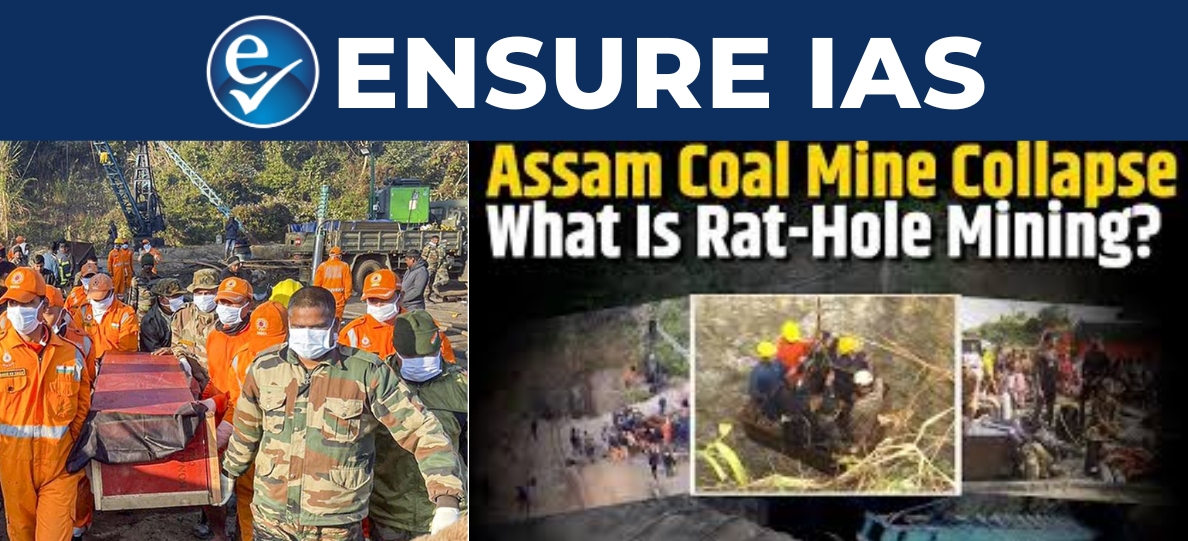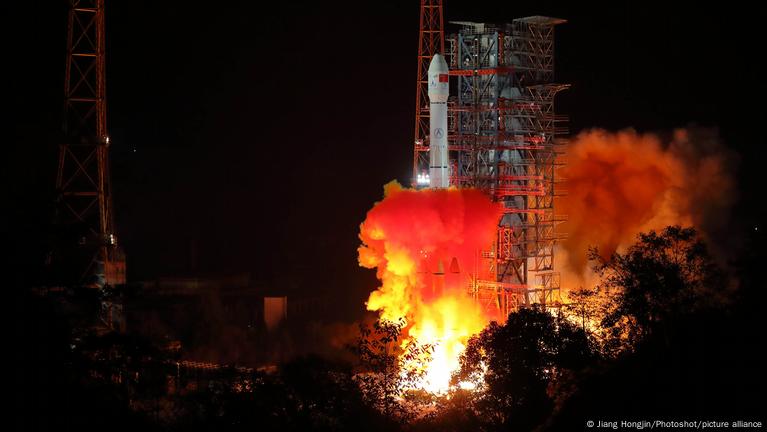- Courses
- GS Full Course 1 Year
- GS Full Course 2 Year
- GS Full Course 3 Year
- GS Full Course Till Selection
- Online Program
- GS Recorded Course
- NCERT (Recorded 500+ Hours)
- Polity Recorded Course
- Geography Recorded Course
- Economy Recorded Course
- AMAC Recorded Course
- Modern India, Post Independence & World History
- Environment Recoded Course
- Governance Recoded Course
- Science & Tech. Recoded Course
- International Relations and Internal Security Recorded Course
- Disaster Management Module Course
- Ethics Recoded Course
- Essay Recoded Course
- Current Affairs Recoded Course
- CSAT
- 5 LAYERED ARJUNA Mentorship
- Public Administration Optional
- ABOUT US
- OUR TOPPERS
- TEST SERIES
- FREE STUDY MATERIAL
- VIDEOS
- CONTACT US
Workers Trapped in Assam Coal Mine - What is 'Rat-Hole' Mining?
Workers Trapped in Assam Coal Mine - What is 'Rat-Hole' Mining?
14-01-2025

- On January 6, 2025, several workers were trapped in a rat-hole coal mine in Dima Hasao district, Assam, after it flooded.
- The mine, which is reportedly several hundred feet deep, has been inundated with water, making rescue operations slow and challenging.
- 2 motor pumps are currently being used to extract the water.
- Assam’s Chief Minister, Himanta Biswa Sarma, confirmed that the National Disaster Relief Force (NDRF) and State Disaster Relief Force (SDRF) have been deployed, with the Indian Army also requested to assist.
What is Rat-Hole Mining?
- Rat-hole mining is a traditional and highly dangerous method of coal mining where small, narrow pits (resembling rat holes) are dug into the earth.
- The method is widely used in the northeastern states of India, especially in Meghalaya, and has extended into other areas like Assam.
- Method:
- The mining involves digging narrow, vertical, or horizontal tunnels, often just wide enough for one person to enter.
- Miners descend into these pits using ropes or bamboo ladders and extract coal manually using basic tools like pickaxes, shovels, and baskets.
- This mining method is often done without safety measures, making it extremely hazardous for workers.
Types of Rat-Hole Mining:
-
Side-Cutting Method:
- Process: Miners dig narrow tunnels along the slopes of hills until they reach the coal seams.
- Coal Seams: In the hills of Meghalaya, the coal seams are usually quite thin, less than 2 meters in thickness.
-
Box-Cutting Method:
- Process: A rectangular opening, varying from 10 to 100 square meters, is made on the surface. Then, a vertical pit is dug down to reach the coal seam.
- Depth: These pits can range from 100 to 400 feet deep.
- Horizontal Tunnels: Once the coal seam is reached, horizontal tunnels are dug through the vertical pit to allow miners to extract the coal.
Environmental and Safety Concerns:
-
Safety Hazards:
- Unregulated Conditions: Rat-hole mines are largely unregulated and often lack essential safety measures such as proper ventilation, structural support, and adequate safety gear.
- Frequent Accidents: Workers face a high risk of injury and death due to cave-ins, flooding, and exposure to harmful gases in the mines.
- Flooding: Mines are especially vulnerable during the rainy season, leading to sudden flooding. This was a major cause of the January 6, 2025, incident in Assam.
- Fatalities: The mining method has resulted in numerous fatalities over the years. The risks are compounded by the unscientific and unsafe mining methods.
-
Environmental Impact:
- Deforestation: Rat-hole mining contributes to the destruction of forests and ecosystems in mining areas.
- Land Degradation: The excavation and extraction process causes significant degradation of land and soil quality, often leaving the area barren and unproductive.
- Water Pollution: Coal mining in these areas leads to water pollution, as coal dust and chemicals often leak into nearby rivers and water bodies, affecting local water sources and agriculture.
- Loss of Biodiversity: The environmental destruction also leads to the loss of flora and fauna in the affected areas, further exacerbating ecological problems.
Legal and Regulatory Issues:
-
NGT Ban on Rat-Hole Mining:
- In 2014, the National Green Tribunal (NGT) imposed a ban on rat-hole mining in Meghalaya, citing severe environmental and safety concerns.
- The ban was reinforced in 2015 after the state government of Meghalaya appealed the decision.
- NGT's Findings: The NGT observed that rat-hole mining led to environmental destruction and posed severe risks to the safety of workers, especially during the monsoon season when flooding occurred, leading to fatalities.
-
Meghalaya Government's Response:
- Despite the ban, rat-hole mining continued in Meghalaya due to the lack of enforcement and the economic dependence of the local population on coal mining.
- In response to the ban, the state government made appeals, and mining continued informally, with little regard for the legal prohibitions.
-
Challenges in Enforcement:
- The rat-hole mining practice continues in many areas due to the lack of alternative livelihoods for local communities.
- Lack of Alternatives: The local population often lacks sufficient skills or job opportunities outside of mining, leading to a continued reliance on this dangerous and illegal practice.
Data and Statistics:
- Fatalities and Incidents: Over the years, there have been numerous reports of fatalities and accidents in rat-hole mining operations. For example, during the rainy season, large numbers of workers have drowned due to the sudden flooding of mines.
- NGT's Observations: The NGT highlighted numerous instances where flooding in mines during the rainy season caused multiple deaths of miners and workers.
- Coal Production: The northeastern region of India, especially Meghalaya, is a significant source of coal. However, much of the coal extraction is done illegally through rat-hole mining, which bypasses regulations and environmental safeguards.
Why the Practice Continues:
- Economic Dependence: Rat-hole mining is a primary source of livelihood for many families in the region. The absence of alternative income-generating activities and training for other jobs keeps the practice alive.
- Lack of Enforcement: Despite legal prohibitions, enforcement remains weak in remote mining areas, allowing the practice to continue under the radar.
- Corruption and Informal Mining: Many local authorities either turn a blind eye or are complicit in allowing illegal mining to take place due to the economic benefits derived from it.
Conclusion:
The tragedy in Assam once again highlights the persistent dangers of rat-hole mining. The method is not only hazardous for workers, as seen in the ongoing rescue operation, but also has devastating environmental consequences. While there have been legal attempts to ban and regulate the practice, it continues due to a combination of economic dependence, lack of alternatives, and weak enforcement of regulations. The incident underscores the urgent need for a more sustainable approach to coal mining and improved livelihoods for the local population.
|
Also Read |
|
| FREE NIOS Books | |




